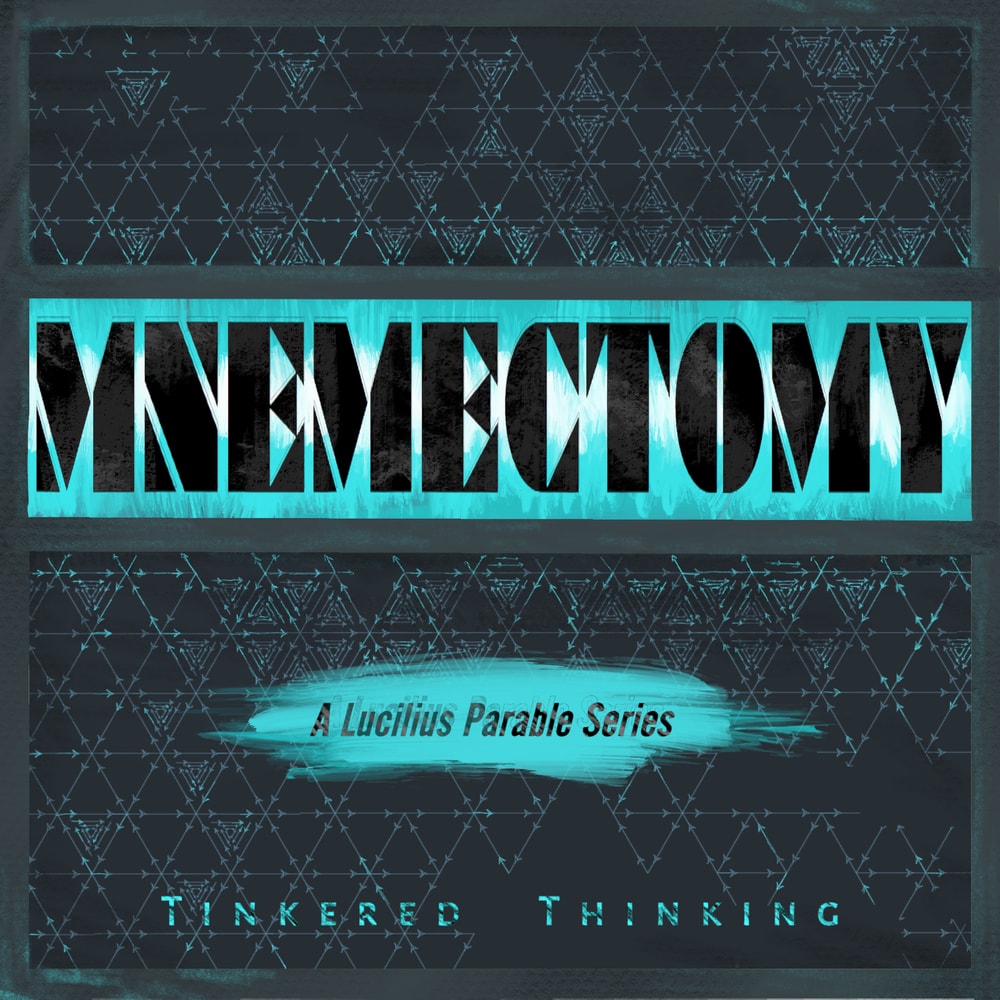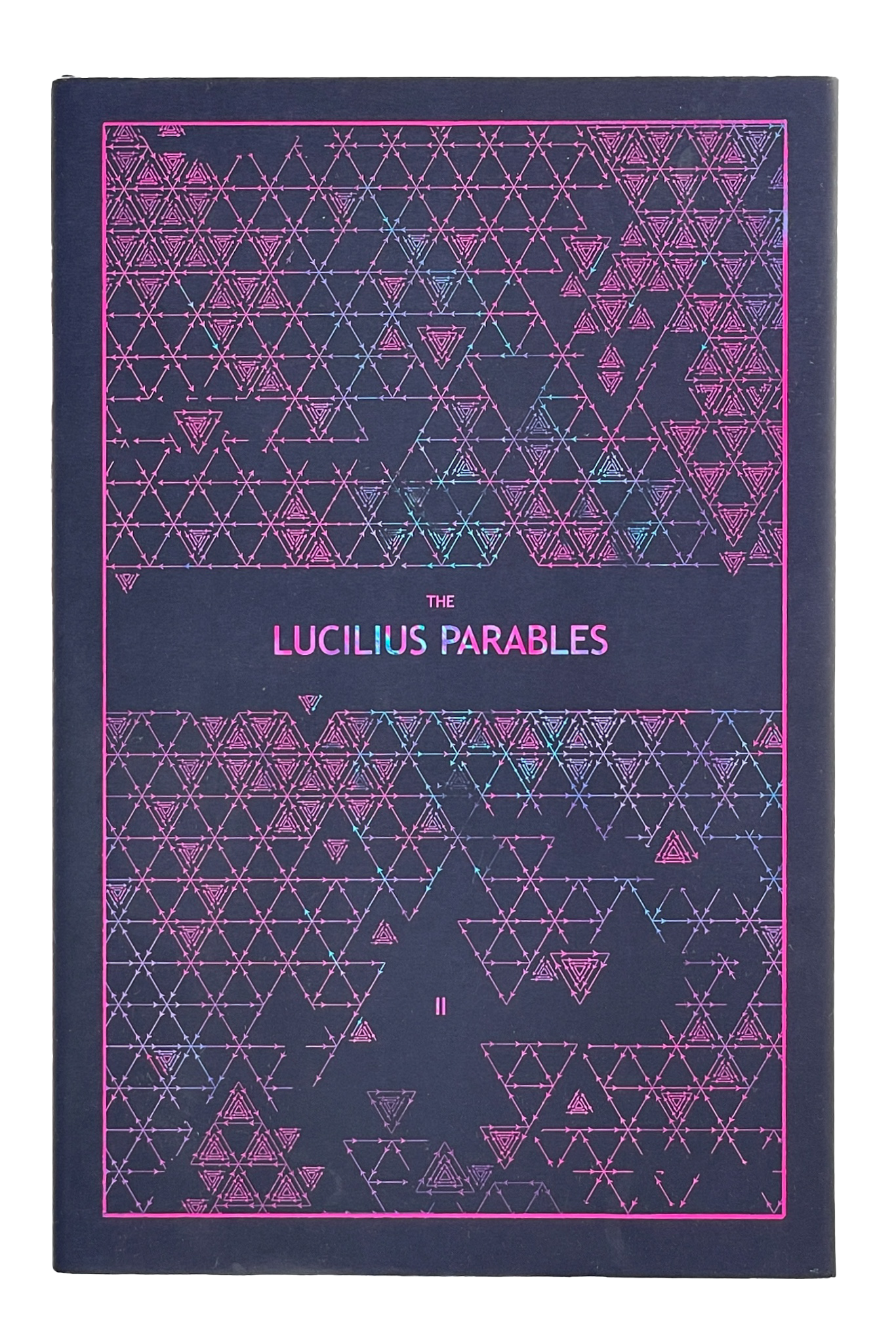Daily, snackable writings to spur changes in thinking.
Building a blueprint for a better brain by tinkering with the code.
subscribe
rss Feeds
SPIN CHESS
A Chess app from Tinkered Thinking featuring a variant of chess that bridges all skill levels!
REPAUSE
A meditation app is forthcoming. Stay Tuned.
RELAY RACING AND THE THUMBTACK
November 14th, 2018
At the heart of motivation is motion.
What is more motivating. . . Or rather, what gets you to move faster and more efficiently:
The chocolate donut on the other side of the room?
or
The thumb tack you just sat on?
One quick game of neuronal ping-pong yields the observation that one situation is positive and one is negative. But strangely enough, the negative situation - i.e. sitting on a thumb tack - is more motivating.
What would happen if we reframe depression as that thumbtack?
The difference and difficulty is that a thumbtack has a clear and unambiguous message, i.e. you sat in the wrong place. And depression has a hazy, ambiguous message that contains no clear solution and even worse: no clear problem.
But what is the message?
Things need to change.
In essence the thumbtack is saying the same thing: you’ve sat in the wrong place, and you should probably change that. The sooner the better.
Depression provides no such clarity.
Think of the exasperated and scared parent who has tried everything to comfort and care for a baby that simply will-not-stop-screaming. If only that tiny kid could talk, perhaps our parent could get some . . relief. Such relief is a function of clarity. The exhausted and scared parent has no clarity about what is wrong. The ability to communicate would suddenly give rise to a channel for clarity, and whatever information the child could give the parent could then prompt actions on the part of the parent that would in turn make both happy.
If only depression could talk, and specifically detail what in the hell is wrong, perhaps then there might be an opportunity to iterate towards some kind of relief.
The message depression carries is about as meaningful as a baton in a relay race. Depression holds that baton - that message - that things must change. And it will continue to run towards the depressed and desperate to pass on the message, mute to the meaning, unending in it’s efforts to get closer and closer and closer in order to hand off the message.
What if that enemy running faster and faster to catch us is doing so in order to try and help?
But each time depression overwhelms the depressed, the baton is not passed, the message is usually not received. And after enough time, the race is on again. But a look over the shoulder, and suddenly, the race seems to be something different.
What if at the heart of depression there isn’t simply a deeply powerful notion that something is wrong, but also a hope – an assurance - that things could be better and that things should be better? If only we have the courage and resources to recognize and root out exactly what is wrong.
If only we can get the message, instead of constantly looking in the rear-view mirror, if only we could grab the baton, that simple message of depression that something needs to change and look forward and charge with all our might towards a better future.
Seneca once wrote: fear keeps pace with hope.
We might think of a coin with two sides. Such sides are so close together, and yet they could not be more diametrically opposed, facing in opposite directions. Perhaps this is the case with depression. It broadcasts the fear of what might happen if things continue, but also contains an implicit hope about how much better things could be if the appropriate actions were taken.
We might do well to remind ourselves of the strange and useful etymology of the word ‘fear’, how knowing it can paradoxically give us courage, to take worthwhile risks with the aim of potentially fulfilling the hope that may be at the core of depression.
This episode references Episode 63: The Etymology of Fear, Episode 24: Hope Grows Foolish with No Doing, Episode 16: Selecting the Solution and Episode 32: Rear-View.
SLIDING ECHO CHAMBERS
November 13th, 2018
Even with the biggest theatre, it’s possible to slowly change the background color of any scene with almost no one noticing. Everyone is too wrapped up in the action on stage to notice such things, even though they are relatively huge changes in comparison. The important difference is the speed of change. The slower something changes, the harder it is to notice.
The most insidious way this unfortunate fact of human memory impacts us is with regards to health.
If one’s health could be stratified into distinct levels from poor to excellent, each level would form it’s own echo chamber. As long as the shift from one level to another isn’t drastically quick, the difference is hard to notice. Such a trend across levels compounds until people find themselves in a state far from what they remember being able to do with their bodies years and decades prior.
Like an individual whose viewpoint is never challenged but only supported by like minded people, the realization of a certain level of health can be a subject of ignorance. Simply put, we are used to how we currently feel and imagining feeling better can be difficult, even if we have experienced such an improved condition at some point in the past.
The individual whose viewpoint on some matter is stuck in an echo chamber only benefits from productive challenges to that viewpoint. The analog for the echo chamber of health would be to challenge our bodies with different experiments, whether they be with food, exercise, sleep or even breathing. Just as negative changes in health are only noticed with sudden changes like getting hit with the flu, so to is the case with the positive that we might discover. Our experiments in health are better done in concentrated isolated ways so as to make any potential effect as noticeable as possible.
Bear in mind that performing multiple experiments makes it harder to differentiate which strategy is creating the effect we are experiencing.
Most important is simply to bear in mind that any current mindset or state of health is generally extremely convincing. It is hard to imagine change without either experiencing it to some degree, or witnessing it. Skepticism about our own state can be our saving grace. A curious skepticism can the thin edge of the wedge – our tool to start prying open our current state in order to potentially level-up and live a better life.
THE NEGATIVE SPACE OF RIDDLES
November 12th, 2018
Negative space in the world of draftsmanship and photography refers to the abstract shaped space that’s created by objects in a frame. For example, if we were to look at a regular wooden stool and attempt to see the shapes that are created by the space between the legs and the cross bars, we would see a series of trapezoids. Another example is making the ‘a-ok’ gesture with one’s hand. One part of the negative space is the circular space made by joining the thumb and forefinger.
Exploring the world of drawing can be aided by a concentration on negative spaces. Drawing an object by attempting to draw only the negative space that it creates around it is a way to defamiliarize the object. This is useful because our preconception of objects often severely hinders our ability to represent such objects graphically on a page. For whatever reason, drawing something without knowing what it is allows us to make a much more accurate and faithful rendering.
Strangely enough, there is no actual difference in the line that delineates the visual edge of any object, and the line that delineates the visual edge of the space around it – they are the same exact line – but which side we concentrate on drastically changes our ability to accurately perceive the line.
This intersection between positive and negative space can work as a good visual framework to look at the nature between problems and solutions.
For example, we can think of the experience of pondering a riddle. We know there is a solution, and we know that the solution, once known, will feel very obvious and intuitive. And yet, the solution is usually not instantly obvious the moment we hear the riddle. We can endure an agonizingly long amount of time pondering the riddle side of this equation without coming across the solution side.
But this is, in essence, the point of riddles. They are generally phrased in such a way that makes the solution elusive. The key is the nature of the phrasing.
Take for example this simple riddle:
Say my name and I disappear, who am I?
This is a fairly easy riddle that might be obvious after a moment or two. But examine just how clear the solution can be if the phrasing of the problem is changed. Here is the same exact riddle phrased in a less entertaining but obvious way.
What is a word that describes the absence of sound?
These questions both have the same answer, silence. But in one case the phrasing creates a kind of red herring for our perspective, whereas in the other one, the phrasing aides our ability to find the solution.
Any and all problems that we encounter in life are a riddle of one kind or another. Life is primarily just the act of solving innumerable problems, both big and small to different degrees of efficacy.
We can level-up our problem solving ability by paying close attention to how we phrase the problems we seek to solve. A poorly phrased problem may prove impossible to solve. But rephrase it and suddenly our abilities naturally become more effective, like attempting to draw the negative space around and between objects instead of trying to draw the objects themselves.
Using the only tool appropriately can fine-tune a question to the point where it outlines the necessary answer so clearly that the question begins to answer itself. We can – in essence - define negative space so clearly that the positive entity of a solution literally pops into being.
The process of finding better questions may in fact be an effort to phrase questions more appropriately in order for the human mind to naturally and effortlessly fill in the negative space created by such questions.
This episode references Episode 42: Level-Up, and Episode 30: The Only Tool
A LUCILIUS PARABLE: SECOND GUESSING
November 11th, 2018
Lucilius and a friend decided to cook some food on a beach one evening. They lugged a grill and a cooler full of food and drinks down to the sandy shore and set up the evening’s camp. The beach was strewn with huge logs that had washed ashore, a byproduct of the regions’ logging industry.
Some of these logs had been painstakingly set into the ground like flagpoles, or looking like bare trees with no branches nor bark.
While Lucilius’ friend took the initiative with the cooking, Lucilius found himself wondering if he could climb one of the upright logs. He walked up to one and studied it. The top was flat and about 20 feet high. Maybe it was doable. He attempted to grab the log in different ways and tried to find footing all around it, but after enough attempts, he decided to give up.
Lucilius’ friend had been watching him the whole time and wondered likewise, though felt a greater sense of possibility.
He quickly walked up to the same log. Lucilius watched how in a seeming flash, his friend ascended to the top of the log.
“How did you do that?” Lucilius asked looking up.
His friend looked down and returned, “I’m not really sure, but I was confident it could be done.”
Lucilius turned to another nearby log and marched up to it, and before he could think too much, he too had climbed to the top and stood high up on the same level as his friend. They both laughed and enjoyed the view for a little while before getting back down to tend to the food.
When dinner’d been had and the two were growing cold as the sun set, they packed things up and started the trek home.
Lucilius wondered about the strange little incident when he couldn’t for the life of him climb the log. Seeing his friend do it had somehow changed everything.
He’d been so concerned with trying to put together some kind of technique to get a boost up on the log, when his friend just went at it, almost without thinking, as though he’d simply trusted his body.
But, Lucilius decided in thought, it all came down to that initial perspective his friend had while watching. He’d been more sure it was possible than Lucilius. And once Lucilius had seen it actually was possible, he too gained a perspective that somehow made the whole effort easy.
He wondered as they walked, how much needless effort was wasted while people second guessed the possibility of their aims.
STATE CHANGE
November 10th, 2018
We’ve all been in a funk, and chances are, we’ll get into a funk again sometime in the future. It can be a sort of whirlpool that eats up ungodly amounts of time and is one of the choice habitats of the Netflix binge, the ice-cream topped carb overload and the perpetual groggy superficial sleep trap.
Each one – in fact – is it’s own whirlpool and together they seem capable of aggregating into one single powerful funky whirlpool where not much happens.
More than a couple days in such a funk can create a habit. It’s good to note that in the literature of habit formation, 3 days is the first threshold where a habit begins to dig it’s trench in our mind.
This is how being in a funk can turn into being stuck in a RUT.
Two things are needed in this teetering situation. First we need the circumspect mindfulness to have the wherewithal to realize what’s going on. To go “Oh, I’m in a funk, and if I’m not careful and proactive, I could get stuck here for a very long time.” The first, realizing one is in a funk, is not terribly difficult. Some may even gloat about it. The second part, about being careful and proactive, begins to probe the tricky and counter-intuitive methods for achieving a STATE CHANGE.
The whirlpool of funk is self-perpetuating. Like most feelings, it seeks to reinforce itself, and it’s because of this feeling, doing something to counter-act and dismantle this feeling is counter-intuitive.
Hence the all too often default response we give when someone gives us good advice like going for a walk. We say:
“I don’t feel like it.”
And that’s the whole point. The response we give couldn’t be more idiotic, but also, it can’t be more appropriate, and emblematic of the problem.
If we can remember the last time that we found our way out of a funk, we might have good evidence for how to do it again. Perhaps someone dragged us out of the house to a social gathering where we had more fun than we expected. Or we went on a hike, or a bike ride.
The physical aspect of these STATE CHANGEs is important and good to investigate. There is a chemical that our nervous system produces called Acetylcholine. It is responsible for all of our muscular movement. Every time you lift the remote to press play on the next Netflix episode, there’s acetylcholine signaling the muscles in your arm and hand to contract in all the intricate ways required to skip the intro. But very little acetylcholine is required for doing this sort of activity.
Performing a perfect deadlift at max weight, on the other hand, produces a comparatively monstrous amount of acetylcholine.
Why is this important? Because acetylcholine doesn’t just signal muscles. Put very simply, acetylcholine impacts many other parts of the brain. One example is the hippocampus, which plays a crucial role in learning and memory formation. While it’s not fully understood, and it’s treatment here is extraordinarily simplistic, it’s safe to say that acetylcholine has a positive impact on the hippocampus. This means that movement and exercise of any kind have a good impact on learning and memory. Generally we concentrate on the peptide groups known as endorphins to point out how exercise has a positive impact on the brain and our mood, but acetylcholine is mentioned here merely to hint at the myriad ways that we can impact our mental state with different strategies.
For example anger can result in damaging words that have negative repercussions on an important relationship, or that anger can be funneled towards a workout with a punching bag. Both use the angry emotion, but the effects of each strategy ramify in completely opposite directions. One makes life worse, while the other resolves the anger while providing a workout.
The best time to experiment with State Changes to find out what works best is before we need it. We can try different things while at a normal baseline and note how different things impact our mental state, whether it be a practice session at the piano, reading a book, or a local hike or simply dropping to the floor and refusing to get up until we’ve done a hundred pushups. A cold shower is also a particularly effective way to kick one’s own ass, mentally that is.
We might want to speculate about all the different neurotransmitters that might be involved with these different activities and simply wonder about how they can all have positive impacts on the brain in different ways. From a strictly conceptual standpoint, it can be a comforting thought to remember that our brains and bodies are constructed with numerous pathways we can use to level-up every time we find ourselves in a funk. Such a thought may bring just enough curiosity to the forefront of that executive brain to ask the question: what should I try right now?
We might want to remember that a funk loves it’s own being in a way, and doesn’t want to give up the spotlight. It is ultimately our choice how much we want to identify with the spotlight-hogging funk, unless of course we have already implemented a steady workout routine and the steady stream of healthy chemistry simply leaves us no choice but to feel better than we normally would.
This episode references Episode 125: Rut, Episode 42: Level-Up, and Episode 183: No Choice.
-compressed.jpg)





